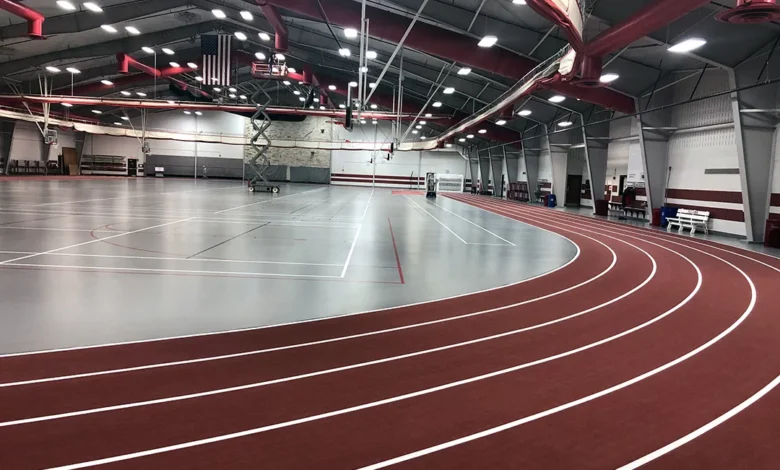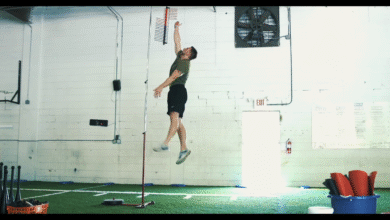Key Factors to Consider When Selecting Indoor Sports Flooring

Choosing the right flooring for indoor sports activities is crucial for athletes’ performance and safety. Whether working with a school gym, professional sports arena, or community recreation hall, selecting suitable flooring can make all the difference in success and satisfaction. The right indoor sports court flooring will accommodate various sports while ensuring durability and safety. Additionally, it plays a pivotal role in enhancing the playing experience and maintaining the facility’s aesthetic appeal, establishing an environment where athletes can excel.
Understanding the Importance of Correct Flooring
Choosing the appropriate flooring is a foundational decision for any sports facility. Proper flooring can prevent injuries, enhance athletes’ comfort, and elevate their performance. The right floor can absorb shock, provide traction for sudden movements, and offer a resilient surface that sustains repeated use. It establishes a safe and efficient environment for athletes to train and compete. Neglecting this choice in favor of lesser materials or cheaper alternatives may lead to frequent unplanned maintenance, unsafe conditions, and unsatisfactory experiences for athletes and spectators alike. Such oversights compromise the facility’s reputation and functionality.
Different Types of Indoor Sports Flooring
Hardwood Flooring
Renowned for its classic appeal and durability, hardwood flooring is often favored for basketball courts and multi-purpose gymnasiums. This flooring provides excellent shock absorption and can withstand heavy use, responding well to the intense demands of competitive sports. However, it requires routine maintenance, including sanding and refinishing, to maintain its appealing look and functionality. Selecting high-quality hardwood will ensure longevity, providing endless seasons of use. Attention to wood quality and maintenance practices will maximize this flooring’s lifespan, contributing an elegant touch to any sports venue.
Synthetic Flooring
Synthetic flooring options, including vinyl and polyurethane, have become popular for their versatility, ease of maintenance, and range of aesthetic choices. These surfaces can accommodate a variety of sports, from basketball to volleyball, providing a cost-effective solution for many facilities. Their ability to mimic the characteristics of traditional floors while offering enhanced durability makes them an increasingly popular choice. Moreover, they offer seamless installation and can be tailored to specific colors and markings to suit team branding and court structure, enhancing visual appeal and functional performance.
Rubber Flooring
Best suited for high-impact sports and activities, rubber flooring is ideal for weight rooms and cardio areas, where durability and safety are paramount. Rubber flooring is lauded for its resilience, slip resistance, and sound absorption qualities. These surfaces can withstand the rigorous demands of heavy equipment and constant foot traffic, providing athletes and facility managers with a long-lasting solution that supports peak performance. Its smooth yet grippy surface aids in the prevention of injuries while contributing to an effective training environment.
Key Factors to Consider for Selection
Specific Sports Activity
The type of sports and activities the facility hosts significantly influences flooring selection. Specific sports have particular requirements for performance, safety, and surface interaction. Hardwood may be the best choice for basketball and dance, providing the needed bounce and responsiveness, while synthetic surfaces cater well to multi-sport environments, offering versatility and endurance. Understanding the sport’s nature and demands ensures that the selected flooring will support athletes’ needs and promote an engaging and effective playing experience.
Maintenance and Durability
Maintenance requirements vary significantly between flooring types. Facilities must weigh the short-term benefits of certain materials against their long-term performance and upkeep needs. Ensure the selected flooring can withstand the expected wear and tear without frequent repairs. Durable materials will reduce long-term costs and maintain safety standards, providing a return on investment through prolonged usability and reduced repair interventions.
Budget Considerations
Balancing quality with budget constraints is fundamental. While hardwood might offer unmatched aesthetics and performance for certain sports, synthetic options may deliver similar benefits at a lower cost. Evaluating all expenditures, including initial installation, periodic maintenance, and potential repair costs, ensures that financial decisions remain sound and aligned with organizational objectives. Proper budgeting allows for informed decisions that meet requirements without overextending financial resources.
Safety and Performance
Safety is paramount when considering sports flooring choices. The selected surface should offer the right friction and shock absorption blend to minimize injury risks while promoting athlete agility. Achieving the delicate balance between sufficient grip and smoothness is key to ensuring that athletes can move freely without fear of slipping or tripping. Athletes’ performance can be observed to improve or diminish based on flooring quality, which underscores the need to prioritize choices that support optimal play conditions.
The Role of Technology and Innovation
Modern technological advancements continue to transform sports flooring, offering innovations that enhance performance, aesthetics, and convenience. Products now come with enhanced moisture resistance, innovative installation systems, and environmentally friendly materials that offer additional facility benefits. Technology-driven solutions provide flexible, customizable options, including shock absorption systems and surface coatings adapted to specific sports. Staying abreast of these developments can significantly improve facility standards and user experiences, leading to more appealing and functionally superior environments.
Sustainability and Environmental Impact
The environmental implications of sports flooring choices cannot be ignored. Opting for manufacturers who source materials sustainably and offer recyclable products aligns with global trends in environmentally responsible development. Sustainable flooring options contribute to worldwide efforts to reduce resource consumption, often resulting in lower long-term environmental impact through durability and efficiency. Eco-friendly certification enhances the facility’s reputation and aligns with social responsibility initiatives, contributing to a holistic approach to facility management and design.
Conclusion
Selecting the right indoor sports flooring is a multi-faceted decision that impacts your sports facility’s athletic performance, safety, and longevity. Facility managers can confidently make informed choices by considering specific activities, maintenance needs, budget constraints, safety measures, and embracing technological advancements. With careful planning and attention to these key factors, you’ll ensure a superior playing surface that meets the needs of all users, both today and into the future. By doing so, facilities enhance their functionality and become champions of innovation and sustainability in the ever-evolving world of sports.




